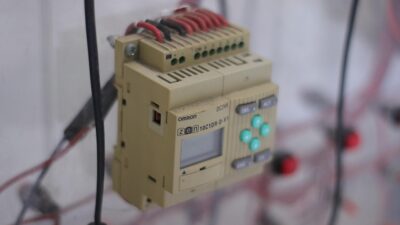In today’s hyper-connected world, the Internet of Things (IoT) is transforming industries and everyday life by interconnecting devices, systems, and services. As this network of devices expands rapidly, the need for efficient data handling and processing becomes more critical. Enter edge computing: a technological advancement poised to revolutionize how we approach IoT by enabling smarter, faster, and more efficient connections.
Understanding Edge Computing
Before diving into its relationship with IoT, let’s clarify what edge computing is. Edge computing refers to the practice of processing data closer to where it is generated rather than relying solely on centralized cloud servers. By deploying computation and data storage at the "edge"—near the source of data creation—edge computing helps to reduce latency, minimizes bandwidth needs, and enhances overall system responsiveness.
Key Benefits of Edge Computing in IoT
-
Reduced Latency: Many IoT applications, such as autonomous vehicles or real-time monitoring systems, require immediate data processing to function effectively. Edge computing allows for real-time analysis, ensuring that decisions are made almost instantaneously, significantly reducing the lag that traditional cloud computing systems can introduce.
-
Bandwith Efficiency: IoT devices generate massive amounts of data, which can overwhelm networks if sent to centralized cloud services for processing. By processing data on the edge, only essential information is transmitted to the cloud, thus conserving bandwidth and reducing costs.
-
Enhanced Reliability: In environments where constant internet connectivity cannot be guaranteed—such as rural areas or remote locations—edge computing allows localized systems to operate independently without continuously relying on cloud access. This reliability is crucial for mission-critical applications.
-
Improved Security: With edge computing, sensitive data can be processed locally instead of being transmitted over the internet to a central server, which helps to minimize the risk of cyberattacks. Enhanced privacy measures can be implemented at the edge, limiting the exposure of personal and sensitive information.
- Scalability and Flexibility: Edge computing systems can be scaled more easily as new IoT devices are added. Organizations can expand their infrastructure without significantly increasing latency or bandwidth use, allowing for greater flexibility in deployment.
Applications of Edge Computing in IoT
The combination of edge computing and IoT can be particularly transformative across several sectors:
-
Smart Cities: IoT-enabled sensors in urban areas can collect data on traffic patterns, energy usage, and environmental conditions. Edge computing allows for real-time analysis of this data to optimize traffic flows, improve energy efficiency, and enhance city services.
-
Healthcare: Wearable devices and remote monitoring systems utilize edge computing to analyze patients’ data on-site. This facilitates quicker responses in critical situations and reduces the need for continuous data transmission to the cloud.
-
Manufacturing: In industrial settings, IoT devices monitor machinery and production lines. Edge computing can predict maintenance needs, control processes, and enhance operational efficiency by processing data on-site.
- Agriculture: Smart agriculture relies heavily on IoT devices to monitor soil conditions, weather data, and crop health. Edge computing can enable farmers to make real-time decisions based on localized data analytics.
Challenges and Future Prospects
Despite its benefits, the integration of edge computing in IoT does not come without challenges. Issues such as interoperability between devices, standardization of edge computing architectures, and the need for robust security measures must be addressed.
However, the future looks promising. As 5G technology rolls out, connectivity will improve, enabling even more robust edge computing solutions. Furthermore, advancements in artificial intelligence (AI) and machine learning (ML) will enable more sophisticated data processing at the edge, opening avenues for smart decision-making in real time.
Conclusion
Edge computing is set to play a pivotal role in the evolution of IoT, enabling smarter and more efficient connections that can transform industries and improve our daily lives. By pushing computation closer to the data source, edge computing not only enhances performance but also paves the way for greater innovations in an increasingly connected world. As organizations continue to harness these technologies, the vision of a seamless, intelligent, and responsive IoT ecosystem becomes increasingly attainable.



